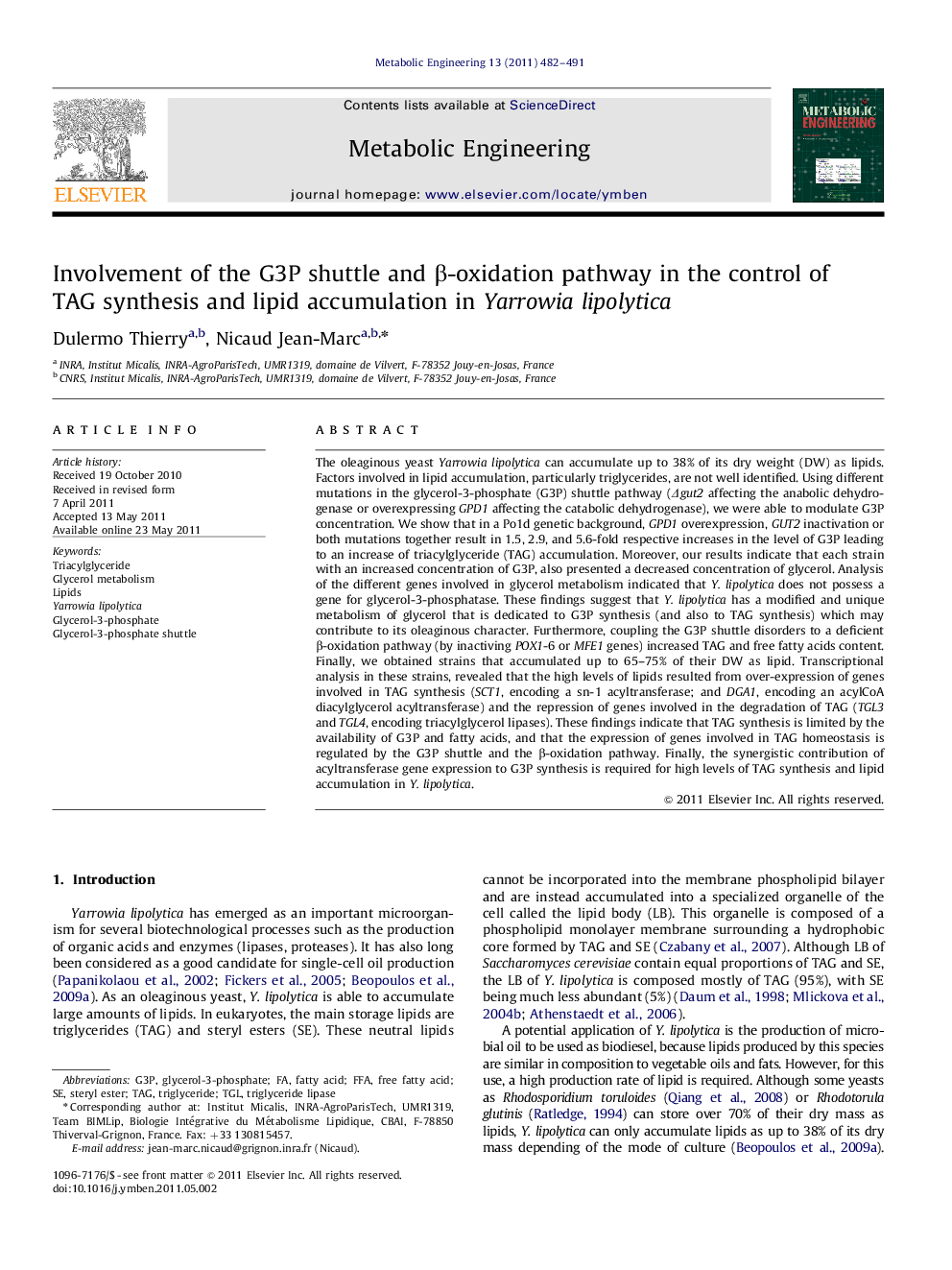| Article ID | Journal | Published Year | Pages | File Type |
|---|---|---|---|---|
| 31607 | Metabolic Engineering | 2011 | 10 Pages |
The oleaginous yeast Yarrowia lipolytica can accumulate up to 38% of its dry weight (DW) as lipids. Factors involved in lipid accumulation, particularly triglycerides, are not well identified. Using different mutations in the glycerol-3-phosphate (G3P) shuttle pathway (Δgut2 affecting the anabolic dehydrogenase or overexpressing GPD1 affecting the catabolic dehydrogenase), we were able to modulate G3P concentration. We show that in a Po1d genetic background, GPD1 overexpression, GUT2 inactivation or both mutations together result in 1.5, 2.9, and 5.6-fold respective increases in the level of G3P leading to an increase of triacylglyceride (TAG) accumulation. Moreover, our results indicate that each strain with an increased concentration of G3P, also presented a decreased concentration of glycerol. Analysis of the different genes involved in glycerol metabolism indicated that Y. lipolytica does not possess a gene for glycerol-3-phosphatase. These findings suggest that Y. lipolytica has a modified and unique metabolism of glycerol that is dedicated to G3P synthesis (and also to TAG synthesis) which may contribute to its oleaginous character. Furthermore, coupling the G3P shuttle disorders to a deficient β-oxidation pathway (by inactiving POX1-6 or MFE1 genes) increased TAG and free fatty acids content. Finally, we obtained strains that accumulated up to 65–75% of their DW as lipid. Transcriptional analysis in these strains, revealed that the high levels of lipids resulted from over-expression of genes involved in TAG synthesis (SCT1, encoding a sn-1 acyltransferase; and DGA1, encoding an acylCoA diacylglycerol acyltransferase) and the repression of genes involved in the degradation of TAG (TGL3 and TGL4, encoding triacylglycerol lipases). These findings indicate that TAG synthesis is limited by the availability of G3P and fatty acids, and that the expression of genes involved in TAG homeostasis is regulated by the G3P shuttle and the β-oxidation pathway. Finally, the synergistic contribution of acyltransferase gene expression to G3P synthesis is required for high levels of TAG synthesis and lipid accumulation in Y. lipolytica.
